Continuation from the previous article.

– When the competition results were announced, the construction was scheduled to be completed in 2021, but it has taken a long time for it to begin.
Daisuke Ibano(Associate Architect Global Design Group、Nikken Sekkei): Yes. Now, I (Ibano), Onishi and Nomura would like to explain what Nikken Sekkei has been doing in Barcelona since the competition results were announced.

– Yes, that is what I came here for today (laughs). In the timeline you just gave us, this is how it went after the competition, wasn’t it?
[From opening the Barcelona office until the start of construction]
May 27, 2016 Nikken Sekkei opens Barcelona office
May-July 2016 Design of the Presidential Box (VVIP Space)
Aug. 2016-July 2017 Preparation of city planning documents
Aug. 2017-Mar. 2018 Schematic Design phase
April 2018-May 2019 Change and addition to Schematic Design
May-Dec. 2019 Design Development phase
Jan. 2020-Dec. 2021 Change and addition to the Developed Design
Sept. 2022-Jan. 2023 Selection of contractor (Selected Limak from Turkey. Construction cost 960M Euros)
Mar. 2023-Aug. 2023 Design supervision for contractor’s proposal
Late June, 2023 Start of construction
– The competition winners were announced in March 2016, and you had already opened the Nikken Sekkei Barcelona office by May.
Ibano: The condition for entering the competition involved the competition winner setting up an office in Barcelona. We never thought we would win when we made the application, so we didn’t think much about it. After winning the competition, we rushed to open an office.
Teruyuki Nomura: I was the first to be assigned to Barcelona, followed by Ibano and Onishi. I had no idea that I would spend more than five years in Barcelona just designing.
Yoshito Onishi: I went to Barcelona with the intention of spending a few months there to put together the developed design, but ended up staying there for more than three years until the design development was completed.
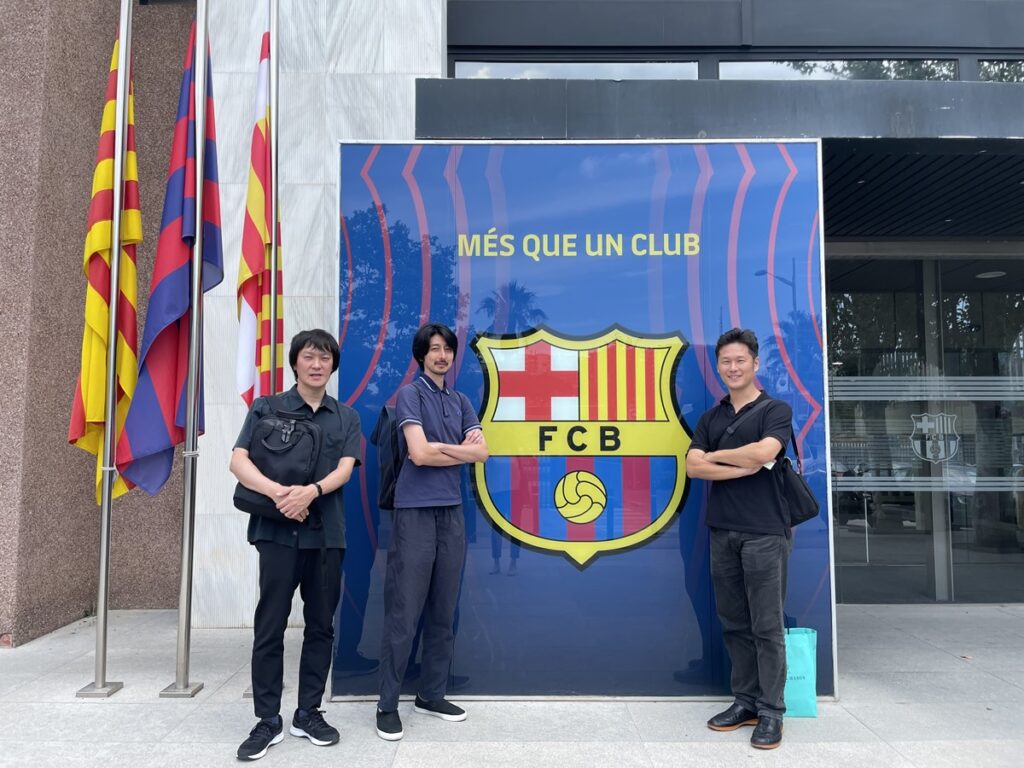
– That sounds straight out of a TV drama. How many people were in the Barcelona office?
Ibano: Including subconsultants, we had about 80 people working on the project at times.
– So many!
Onishi: The design of a large stadium requires many staff members because of the complexity of the functions and the large number of specialized consultants required. When we designed the Zaha Proposal for the New National Stadium, we had a total of over 100 people working on it.
– What kind of work did you start with?
Onishi: After winning the competition, we found that the application for city planning was not progressing as much as we had expected. If the existing stadium were to be enlarged with an addition, it would cover the road. So we had to move the road. Our first task was to prepare drawings to make changes to the city planning.
– Wow, you had to start there! The local collaborator was changed after the competition, right? It was Pascual Ausió Arquitectes at the time of the competition, but it is now a firm called b720.
Ibano: Yes, that’s right, the first year we were busy with the administrative procedures I just mentioned, and in the second year, when we were finally about to sign the schematic design contract, they dropped out of the project.
Onishi: Nikken Sekkei basically doesn’t do architect of record (AoR) work overseas, so we looked for an alternative local office that could do the AoR based on its achievements. We asked b720, a relatively large design firm in Barcelona with an extensive track record of collaboration with overseas firms, to join our team. The Torres Porta Fira (2010), built by Toyo Ito in Barcelona, was also realized in collaboration with b720.
Nomura: Personally, the first three months or so of the schematic design phase were the hardest. Pascual Ausió Arquitectes, who had been working with us until then, left, and we had to make the b720 members understand the project from scratch. The schematic design period was set at 8 months, and since there was no locally hired staff at that time, most of the work was done in collaboration with our Japanese members stationed in Barcelona and those working in Japan.
– Please excuse my bluntness, but why did it take so long to start construction? If you look at the timeline I mentioned earlier, there are 14 months of “modifications to the schematic design” after the schematic design (8 months) and 24 months of “modifications made to the developed design” after the design development (6.5 months)…
Onishi: With so many stakeholders, demands change quite often. If we make a proposal according to a changed requirement and are told that the budget does not fit, we have to start over and make another proposal.
Ibano: It was like trying to wring out a dry towel.
– I see. Five years of that sounds excruciating. I had been thinking you were having so much fun in Barcelona. So sorry.
Ibano: I mean, there were a lot of fun things too, but it definitely gave us thick skin.
– Was there a reason you were finally able to start construction?
Ibano: The construction conditions were reviewed when Joan Laporta became the new president of FC Barcelona in March 2021.
At the time of the competition, it was postulated that the renovation work would be done in stages during the off-season only, but the Club decided to close Spotify Camp Nou for construction this season (2023) until the middle of next season (2024). During this period, the Olympic Stadium in Montjuïc will be the home ground of FC Barcelona.
– Have there been any big changes from the competition stage?
Ibano: The exterior and concept have not changed significantly. The major change in planning was that while the competition plan called for dismantling the existing firsttier and building an addition on the first tier and outside, the development plan called for dismantling the third tier and building a new one.
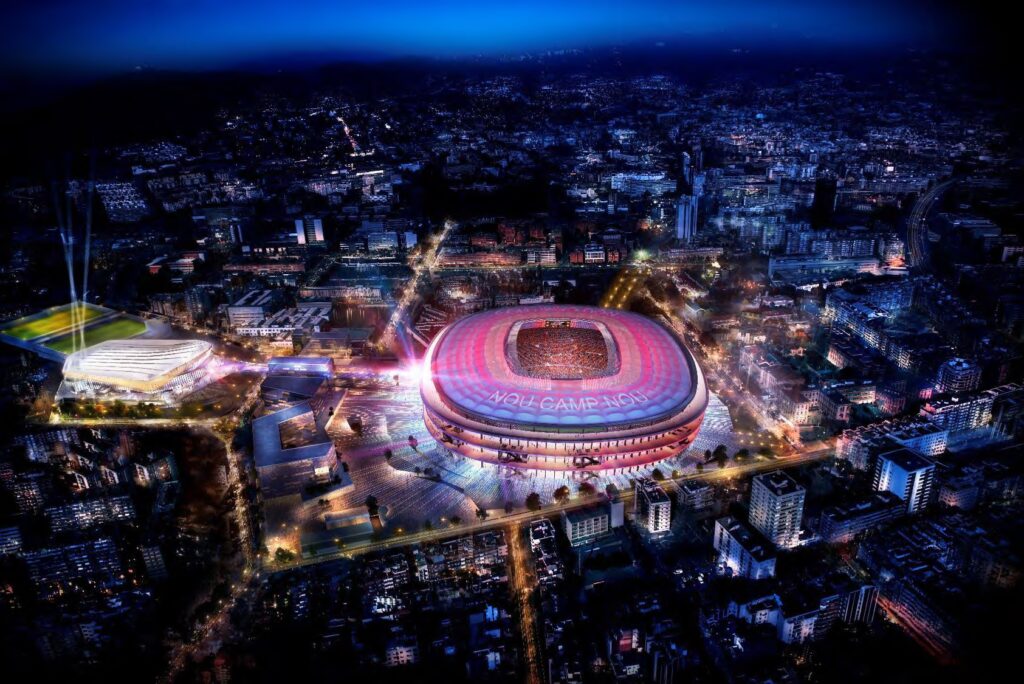
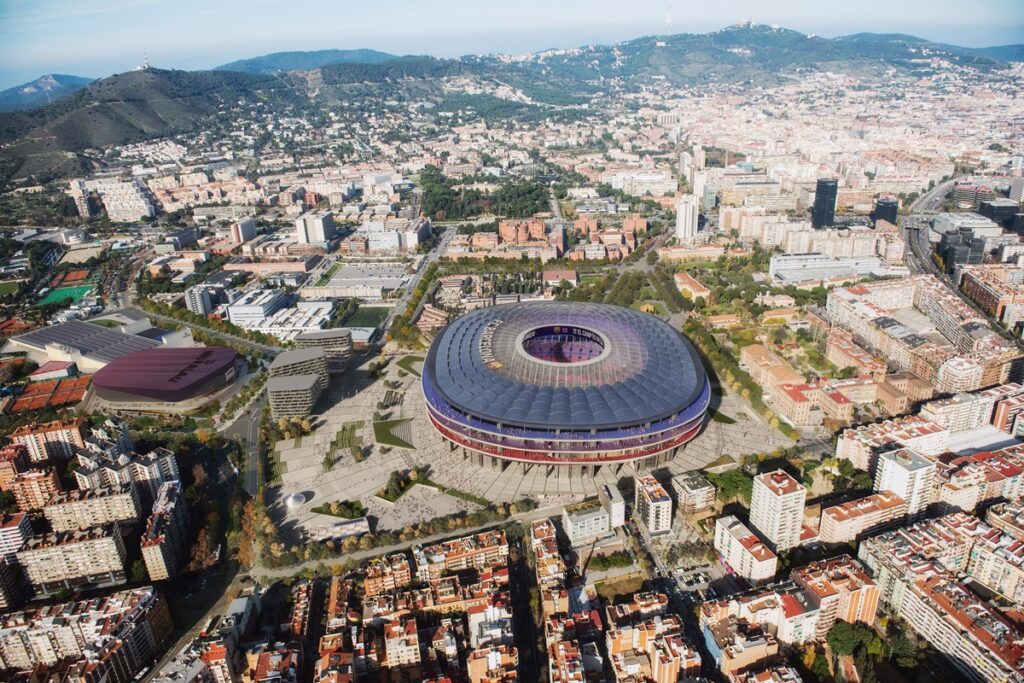

– So it was the third tier that was getting torn down at the site.
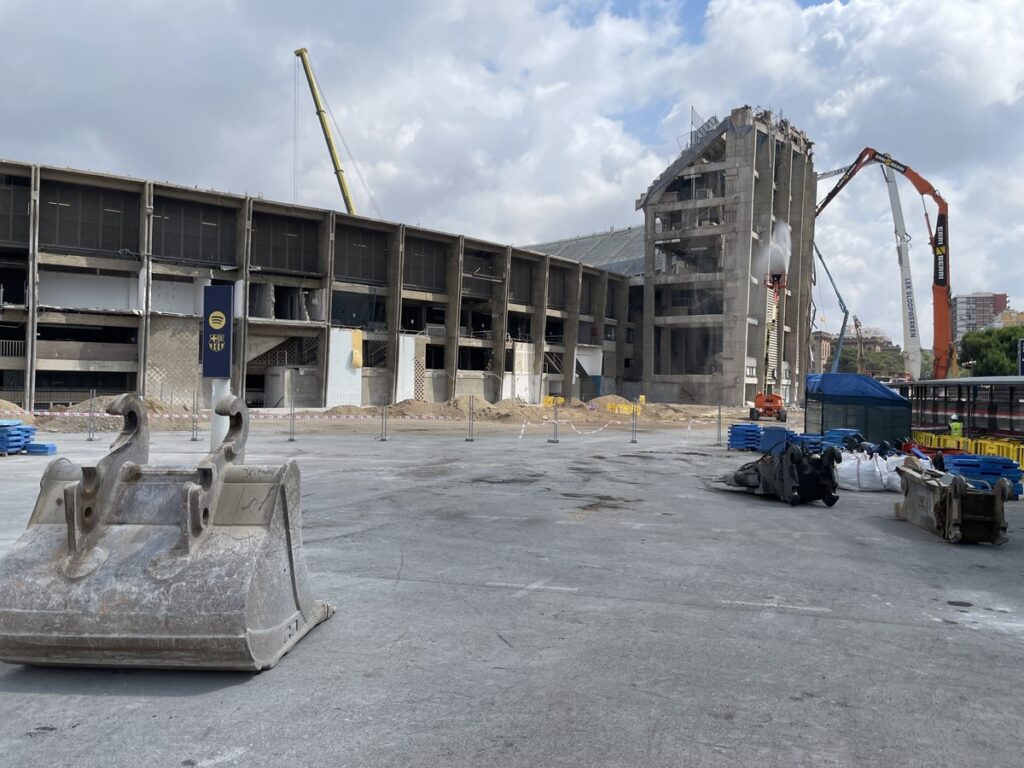
Onishi: The original stadium designed by Francesc Mitjans in 1957 was a magnificent design, and we are trying to make the most of it. The third tier, which is now being demolished, was added later, and the extension was not particularly well-thought-out in its design, so we will rebuild the third tier and put the VIP seating between the second and third tiers.
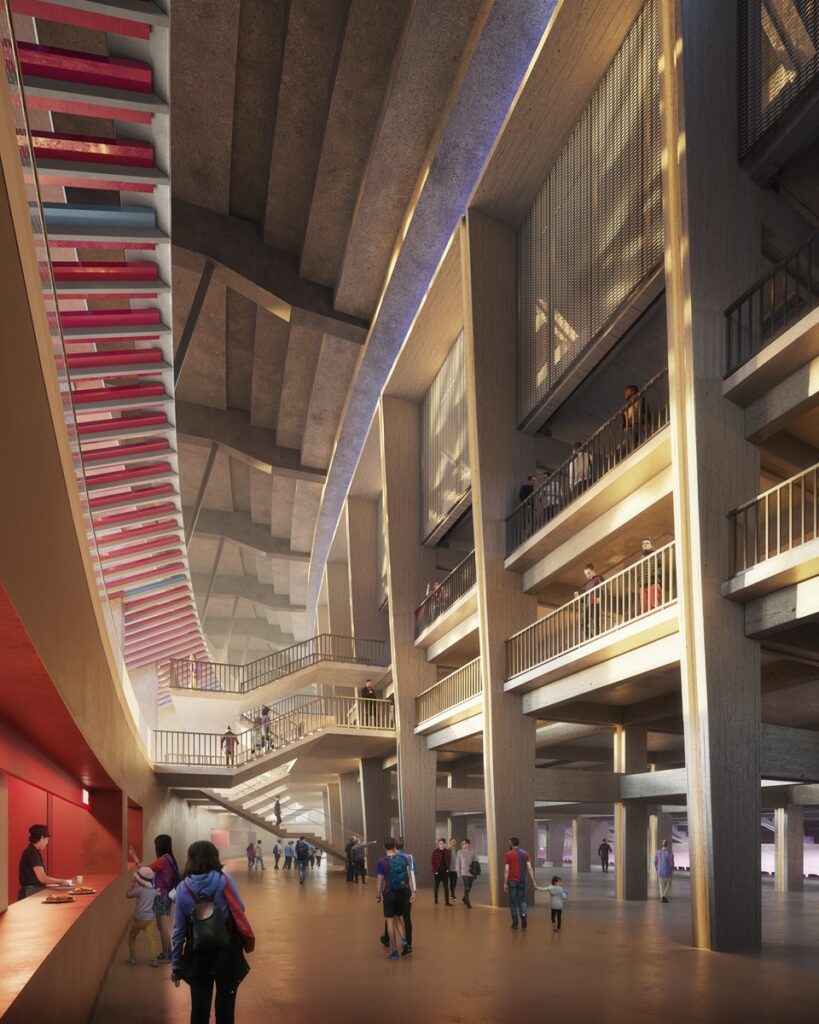

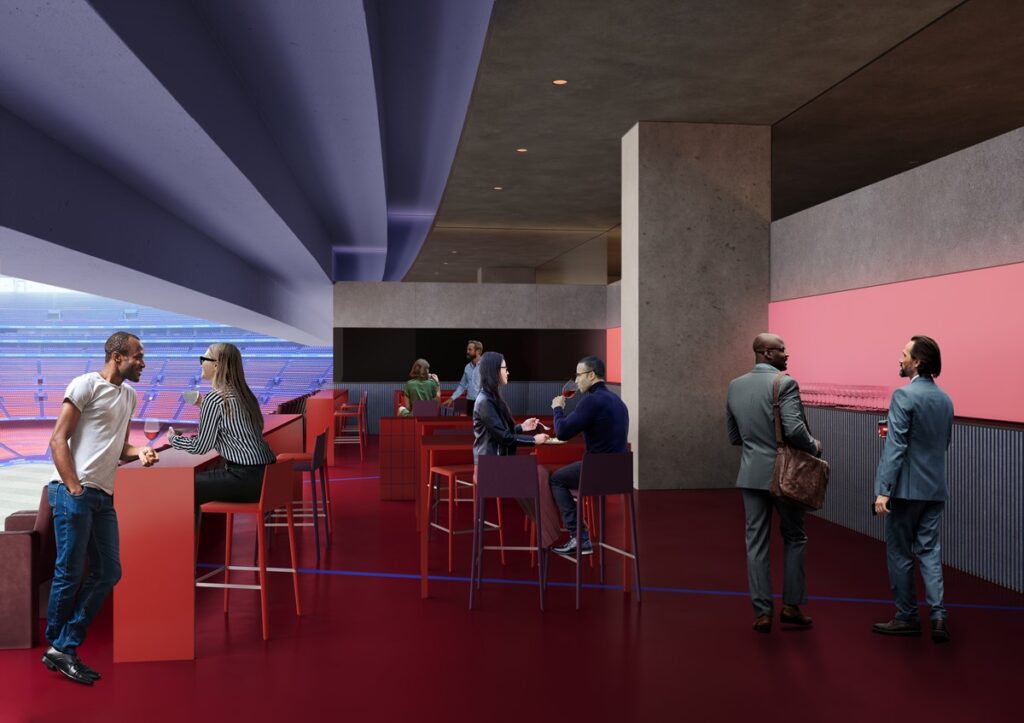

Nomura: The first and second tiers are also difficult to move because many of the long-time Socios have seating rights.
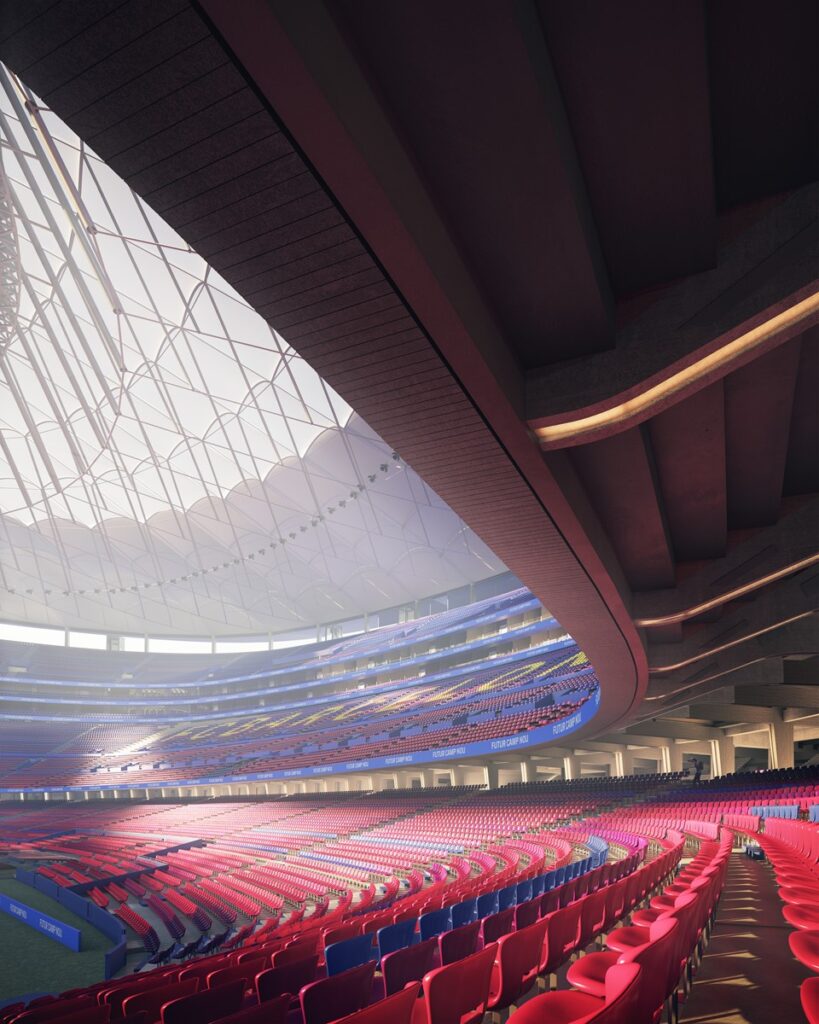

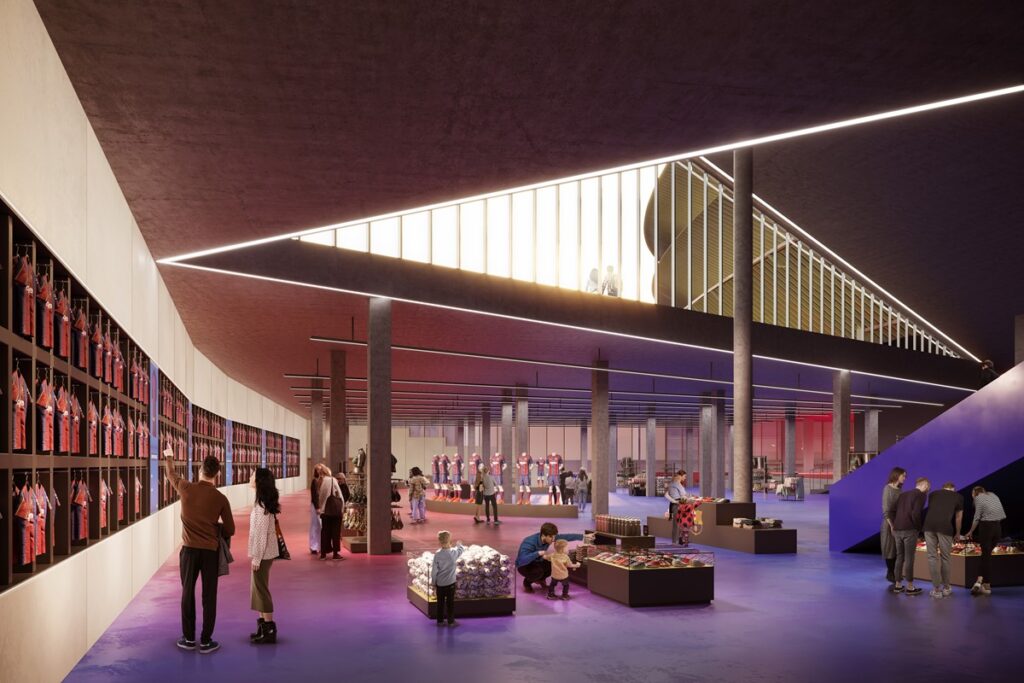
– Where does Nikken stand now?
Ibano: In February 2022, we completed the design development work and returned to Japan; the AoR was changed from IDOM+b720 to Torella+JG. In January 2023, the contractor was decided, Limak of Turkey, and we are currently performing as Design Guardian of the Spotify Camp Nou project.
